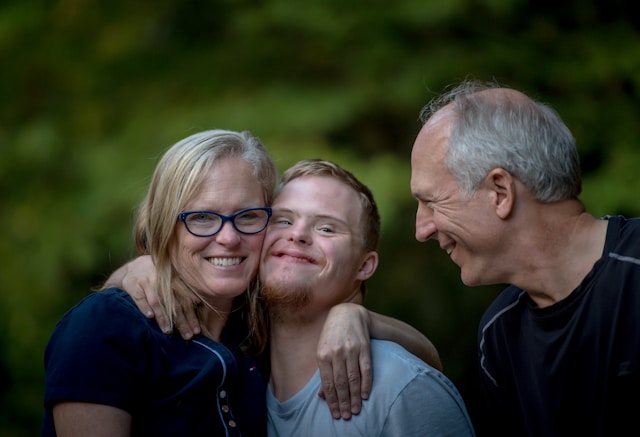Having an all-round view of autism is essential when supporting or fostering inclusivity for individuals on the spectrum. Through the growing awareness of Autism spectrum disorder (ASD), people are differentiating between the common myths and misconceptions from the reality of the condition.
Keep expanding your knowledge gradually on the best practices and resources you need for someone with autism. This article looks at six practical tips to understand autism perfectly.
Learn the Body Language
Communication is essential to autism, as it helps you offer the proper assistance. Whether through speech or nonverbal communication, you must know what every gesture or cue means, especially when dealing with a child.
There is a wide range of communication options that autistic individuals prefer, such as assistive communication devices, written language, and gestures. For you to be good at understandingcommunication styles, consider being inclined to the unique communication style and avoid pressuring them to conform to the neurotypical.
This helps create a perfect rapport while eliminating trust issues. Even if the non-verbal style may be different, it still helps convey the feelings, needs, and thoughts.
For autistic individuals, you’ll find them having atypical body language, which needs understanding, including avoidance of eye contact and difficulty interpreting social cues. You should also be mindful of the self-stimulating behaviors such as the repetitive movements.
The hand flapping in autism can happen for many reasons, such as excitement and nervousness. It’s something not to worry about, but learning how to manage them may be suitable. Begin by understanding sensitivities and find ways to calm them down.
You can also leverage AAC (augmentative and alternative communication) systems and visual support to enhance your engagement. The important thing is consistency, which makes them attuned to certain styles. Combining different methods at once will confuse and slow your communications.
Practice Empathy
Offering the best assistance starts with you putting yourself in their shoes. Look at their hurdles, perspectives, and experiences and assure them of your unwavering support. Avoid being too pressing when trying to make them learn new things.
Instead, focus on their abilities and be patient with them. Explain that failing or being unable to do some things is normal and it has nothing to do with their condition.
As a parent or guardian of a child on the spectrum, work also on their social welfare. Find a way of making them understand what interaction with people is all about. Avoid imposing expectations and assumptions; be open and transparentabout your actions. Be good at validating their concerns and worries and giving them practical solutions.
Be their strongest confidant and practice active listening during your conversations. Such efforts go a long way in making them feel appreciated, valued, and special, which helps in managing the spectrum. Schedule sessions on your preferred basis where you’ll discuss any new challenges or issues they may be facing along the way with them.
Promote Inclusion and Advocacy
At the community level, there ought to be deliberate actions to make people living with the conditions enjoy a high quality of life. This calls for creating public awareness of what autism is all about and the role of everyone in making the world inclusive. Spearheaded formulation of policies that champion more equality.
The same applies to employment and educational settings, where everyone should be guided on embracing neurodiversity. For groups, even in digital spaces, where you can bring together people with or those helping people with autism, amplifying the voices will help emphasize the need to prioritize autism management.
Recognize Neurodiversity
This is an important concept that lets us identify neurological differences like ADHD, dyslexia, and autism, among others. With neurodiversity, you’ll view the different conditions as variations of the human brain rather than disorders. Speak with specialists on the best ways to handle diverse cognitive profiles.
While pathologizing language is part of helping individuals in the spectrum, it’s sometimes important to focus on better ways to give them empowerment. This can be done by pushing for acceptance and appreciating neurodiversity.
When having an autistic kid, for instance, make them see the positive side of their condition and find ways to boost their strengths. If they have a passion for creatives, for instance, look for all the means and resources to help them be better at the craft. It will boost their confidence and make them reduce anxiety while developing a deep sense of self-worth.
Create Sensory-Friendly Environments
The surroundings in which an autistic individual is present are equally crucial to the management plans. You need to keep them in settings that offer much-needed support and do not aggravate the symptoms. For instance, consider keeping the noises low, avoiding strong odors, and keeping the light brightness optimal. By doing so, you’ll lower the chances of meltdowns and anxiety.
By creating such a sensory-friendly environment, you minimize the sensory overload and encouragethem to concentrate on other areas that can make them better. For instance, a quiet place will immerse them in their favorite indoor activities, such as creative writing and painting, further improving their conditions.
Keep looking for new ways to modify your home to make it more conducive to them. For instance, you can replace the curtains and window treatments with alternatives that block outdoor lights better. This helps prevent stray lights which can bring anxiety particularly when living on new busy roads.
Educate Yourself

Learning more about the condition empowers you as a parent or caregiver to know the best ways to deal with the individual. Being a spectrum disorder implies that the way it presents in one individual differs from the way it presents in another.
By understanding the various characteristics, you become prepared psychologically for the lived realities of the condition. Be comprehensive when gathering knowledge where you’ll find books, documentaries, and even podcasts that specialize in ASD.
It also makes sense to listen to autistic individuals speak to get firsthand details and perspectives that widen your knowledge of the condition beyond the clinical description.
The best way to help someone living with autism is knowing every aspect of it. The main characteristics, triggers, and what good management is all about are as follows: You need to also walk with them in their journey by creating the perfect conditions and understanding their needs well.
Every effort you make needs to be individualized to be impactful to your special person.



Leave a Comment